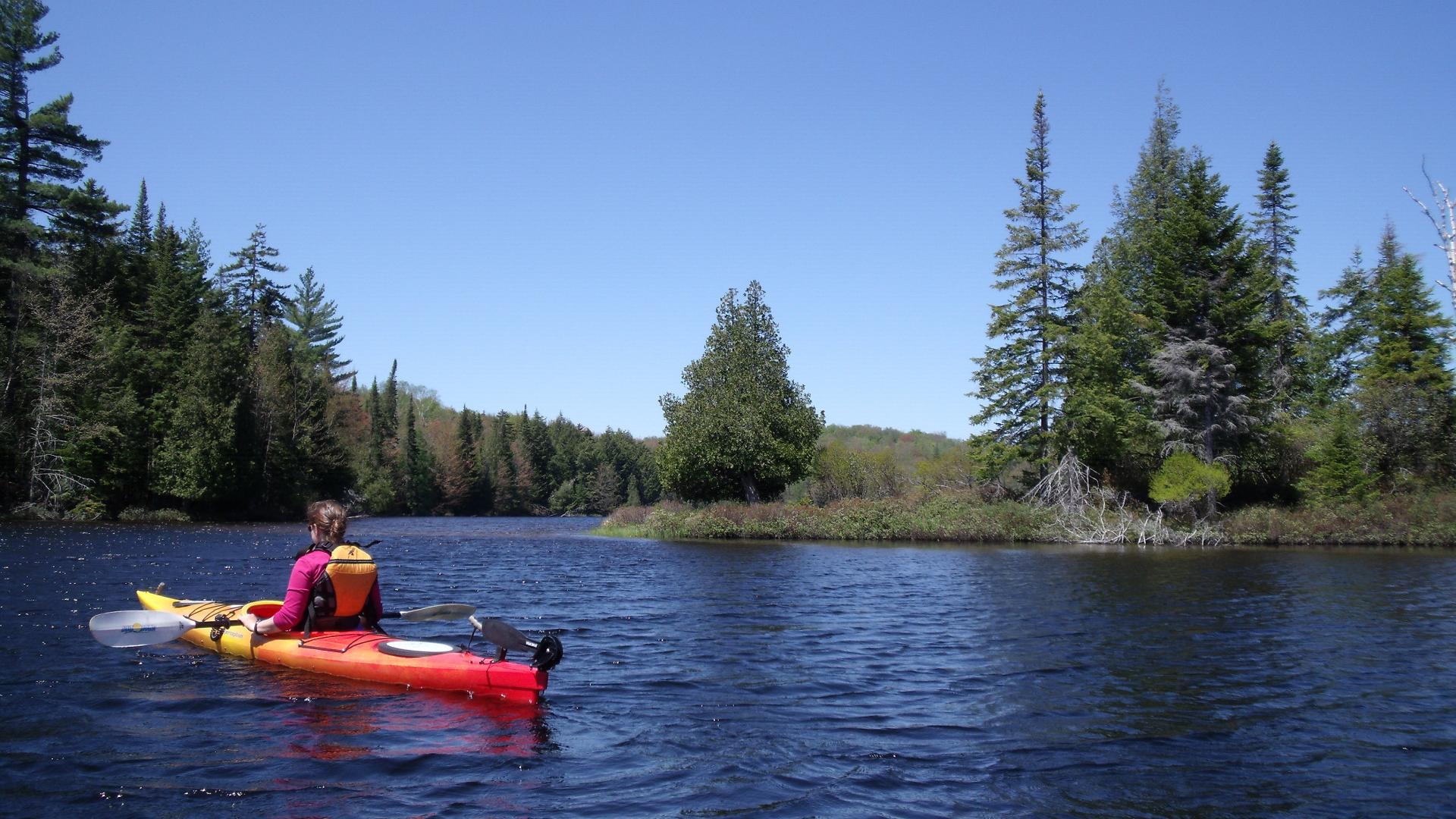How to decide which boat to buy
Picking the right boat doesn’t need to be as daunting and overwhelming as you might think it’s going to be. Sure there are a ton of boats out there to choose from, and many questions you need answered to narrow down the field, but if you are prepared and start your shopping early, I know you can do it and be happy with the results. Go into this experience with an open mind, and you'll come out with a great ride.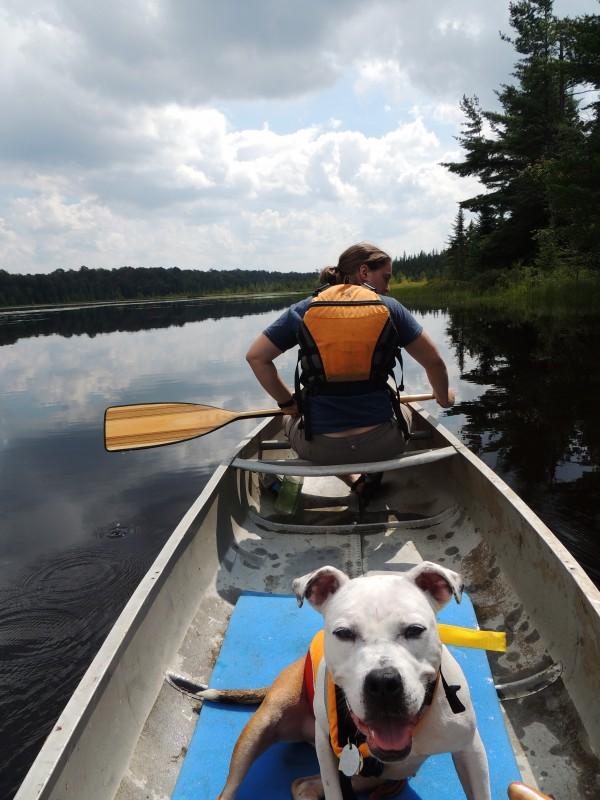
Where am I going to go? Equals what size boat!
First, you need to decide where you will be paddling the most, but don't limit yourself either - this will give you a better idea as to what size boat you might need. Will you be navigating rivers with tight oxbows and narrow passages? Will you be on small ponds and lakes? Will you venture off onto larger lakes like the Saranac’s or Lake Champlain?
If you answered rivers that are narrow with sharp oxbow turns, you might want to go for a shorter boat, no longer than 12-feet in length. While a 15-foot boat would work, you might find yourself fighting the turns and getting frustrated in stronger currents. Shorter boats have a smaller turning radius making it easier to navigate those oxbows and meandering courses.
If you plan to be on larger lakes, go for a boat of at least 12-feet in length or longer. They are easier to paddle when going straight and are much more efficient on large open waters than shorter boats. Shorter boats without rudders or a drop-down skeg tend to fishtail as you paddle, reducing your efficiency. Longer boats are faster and are not affected by waves as much as shorter boats.
If you are on smaller ponds and lakes, you can pretty much go with anything without worry.
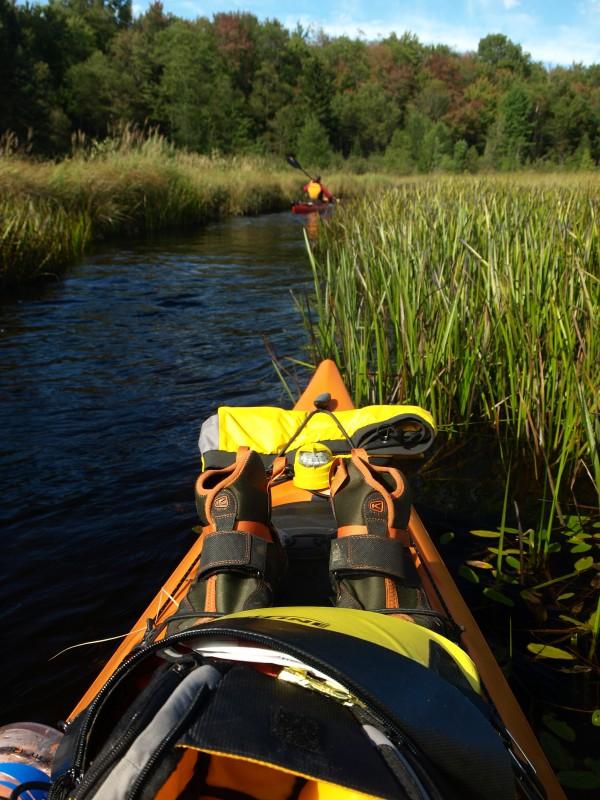
Should I get a rudder? Skeg?
Rudders only come on kayaks, and are usually set up as an option, or can be added on later. Rudders are great on bigger boats and for larger waters where turning can be difficult. They also help to keep your boat straight when crosswinds fight you from staying on course. Rudders can also be used on longer boats for flatwater river travel, which can help you get around those sharp corners but can drag on rocks and damage the boat if the water is too shallow.
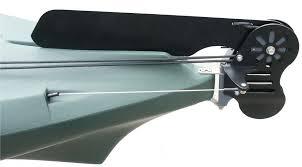
A skeg is a bit different than a rudder and drops down below the boat rather than off the back. Skegs drop down as a tail to help your boat stay straight on bigger waters and during varying wind conditions, adding speed and efficiency. A skeg is not an option; your boat either has it or doesn’t. The skeg can be worked from the cockpit of the boat with ease and many skegs have several different depth settings.
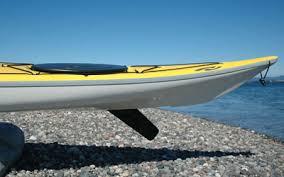
What color should I get?
Sounds like a crazy question but think of it this way, if you are blue in a large body of water, how easy do you think you can be seen by a motorboat driver going 40-50 mph? Brighter colors are best, always. But, if you truly want a blue boat, I recommend you use it on waters where large motorboats are not used. Lake Champlain is not a good lake for a blue kayak, but Putnam Pond would be fine. Green also blends in with the surroundings and doesn’t make for a safe color either.
What type of boat material should I consider?
The type of boat material you choose is a very important question, and it all depends on where you will be going and if you will be portaging a lot. While fiberglass and carbon fiber are strong, they do not take the beating of aluminum, composite, or plastic material. If you plan to be on rivers where there is potential of class one and two rapids, don’t get a fiberglass canoe, it will be ruined. Composite, plastic, and aluminum boats are built to take a beating and keep coming back for more.
Fiberglass and carbon fiber are very light in comparison to other materials but they are also much more expensive. If you think you will be in an area where a boat like this could be damaged, either be exceptionally careful, or use a boat made of different materials.
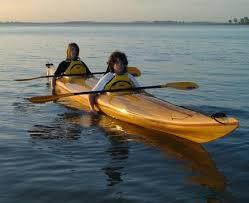
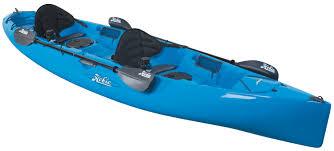
Other design options for Kayaks
- Tandem: This is simply a two-person kayak. They are usually 14-feet or longer and are perfect for larger bodies of water. They are quite heavy and a bit sluggish in the water.
- Sit-on-top: This design is a kayak that you sit on top of, rather than in a cockpit. These are excellent options for fishing or to be used as a dock boat. They are easy to get off of and back on for swimming. They are very heavy, a bit slow-moving, but very maneuverable.
Design options for canoes
- Two-person: This is your typical canoe where there is a power paddler in the back and a person to steer in the front.
- Single-person: This is more of an open deck kayak. The shape is more along the lines of a canoe, but typically is paddled with a kayak paddle. Canoe paddles will work as well, but since you sit on the bottom of the boat, like a kayak, the canoe paddle would have to be much longer than normal and the reach is a bit awkward. If you wish to use a single-person canoe and want to use a canoe paddle, I recommend you get seating that is higher up like a two-person canoe.
- Hull shape: There are four major hull shapes for canoe bottoms and this feature often gets overlooked when buying your first canoe, but you should keep it in mind.
- Flat: This is like paddling a bathtub. There is much more surface on the water, which makes it much more stable, but has significant drag.
- Arched: This is slightly less stable, but still decent. While the bottom is rounded there is a rib along the side that works as a kind of stopping point - or warning point, as I like to call it. When tipped, this rib catches the water just enough to give you chance to lean back upright.
- Round: This boat is very tipsy. You won’t see this design very often due to its lack of popularity.
- Modified V: This is the most popular design and offers good maneuverability and excellent stability.
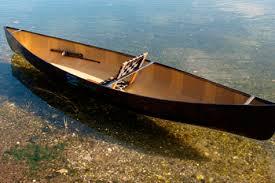
While there are many questions to be answered, the first step I recommend is renting the type of canoe or kayak that you are looking to purchase. Many outfitters and retailers have rentals for you to try before you buy; some will even use the rental fees toward the purchase of a boat at their outlet. If you have more questions don’t be afraid to ask or seek out other professionals and guide services for additional insight on boat selection.
